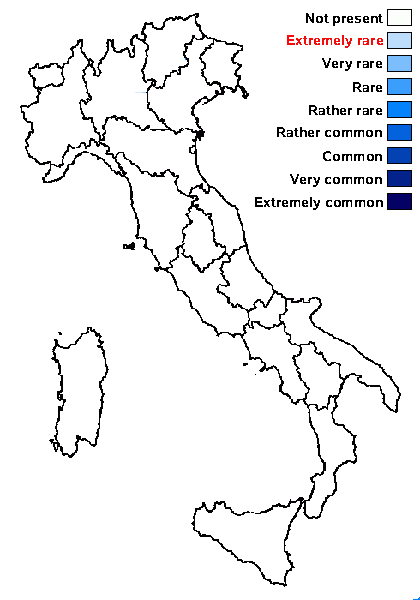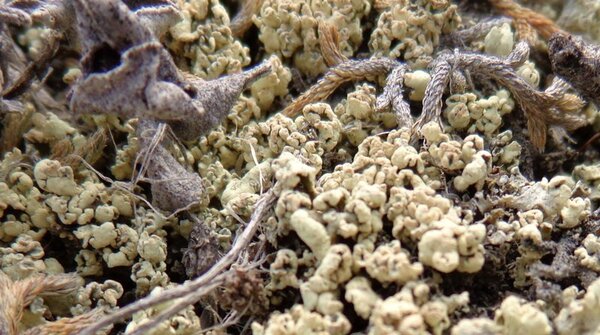Cladonia luteoalba A. Wilson & Wheldon
Flora W. Lancashire: 450, 1907
Synonyms:
Distribution:
Description: Primary thallus squamulose, persistent, consisting of rounded to elongate, 1-3 cm long, up to 1 cm wide squamules with crenulate to laciniate, incurved margins, yellowish green and pruinose above, cottony and yellow beneath. Podetia very rare, up to 12 mm long and 3 mm wide, subulate or narrowly scyphose, simple or sometimes proliferating from the margins, with an ecorticate, verrucose-arachnoid, esorediate, not squamulose surface. Apothecia red to ochre-yellow, located along the margins of cups, often coalescing. Asci 8-spored, clavate, thickened at apex, with a K/I+ blue tholus and a K/I+ strongly blue outer gelatinous sheath, Cladonia-type. Ascospores 1-celled, hyaline, ellipsoid. Pycnidia mainly at the margins of cups or on the surface of primary squamules. Conidia hyaline, curved. Photobiont chlorococcoid. Spot tests: K-, C-, KC+ yellow, P-, UV-. Chemistry: usnic acid and zeorin. Note: on soil layers over siliceous rocks and plant debris in open habitats; widespread in Europe but not common, with a few records from the subalpine belt of the Eastern Alps (Austria), some of which not far from the Italian border. To be looked for in the Italian Alps.
Growth form: Squamulose
Substrata: rocks, soil, terricolous mosses, and plant debris
Photobiont: green algae other than Trentepohlia
Reproductive strategy: mainly asexual, by soredia, or soredia-like structures (e.g. blastidia)
Most common in areas with a humid-warm climate (e.g. most of Tyrrenian Italy)

Predictive model
Growth form: Squamulose
Substrata: rocks, soil, terricolous mosses, and plant debris
Photobiont: green algae other than Trentepohlia
Reproductive strategy: mainly asexual, by soredia, or soredia-like structures (e.g. blastidia)
Most common in areas with a humid-warm climate (e.g. most of Tyrrenian Italy)

Predictive model
 Index Fungorum
Index Fungorum
 GBIF
GBIF



